

Designation:VHT-1 Centaur Veritech Hover Tank (VHT-1, -1A1, -1A2) |
 |
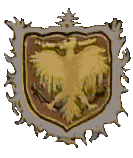
|
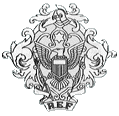
|
||
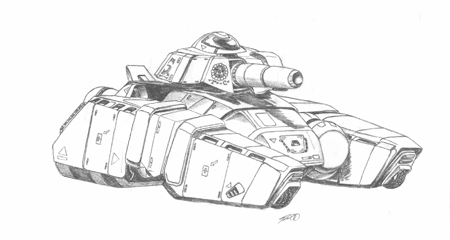
|
|||||
| Tank | Centaur | |
|---|---|---|
| Length: | 6.7 | 6.2 meters |
| Width: | 4.0 | 5.0 meters |
| Height: | 2.3 | 4.5 meters |
| Weight: | 38 metric tons. | |
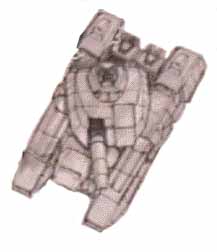
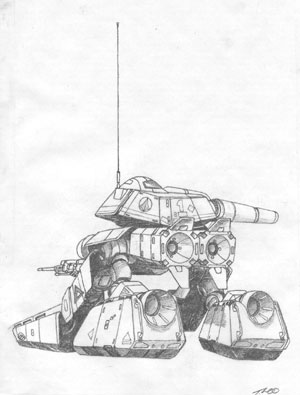

The armor on the VHT-1 is composed of a standard Chobam laminar developed in the late 20th century and improved with the materials science advances made during the Robotech era. This armor was mainly designed to defeat projectiles and other kinetic weapons. Its forward turret armor is is composed of a standard Chobham laminar.
This armor was designed to defeat projectiles striking the forward surfaces of main battle vehicles, and is also effective against beam weapons. The armor on the Centaur stops all small arms and heavy infantry weapons fire, provides good resistance to light mecha-mounted weaponry, such as the Zentraedi 22.3mm HE autocannon round, and fair resistance to medium mecha-mounted weaponry, such as the Valkyrie's 55mm APFSDS round. The armor on the front of the turret stops all small arms, heavy infantry weapons fire, and light mecha-mounted weaponry, and provides excellent resistance to medium mecha-mounted weaponry, and fair resistance to heavy mecha-mounted weaponry. The commander's canopy is vulnerable to heavy infantry weapons and greater, and hence his seat can drop, allowing an armored panel to slide over the cupola hatch for additional protection. When buttoned up, the cupola's armor is nearly equivalent to the armor on the rest of the turret's upper surface.
When the revised Centaur was devised for the competition for the next UEG hovertank, significant advanced in armor technology were applied to increase the protection to the crew. The armor on the VHT-1A2 is a new development in low-mass composite-materials Chobham plating that became the standard for all Terran mecha after its application to the VQ-6A Vandal. Aside from the respectable protection provided against projectiles, missiles, and other kinetic weapons, this armor is also resistant to plasma globes (annihilation discs), lasers, and to a lesser extent, particle guns, owing to the fact that the armor can flake off and evaporate in layers under fire from such high-energy weapons, taking much of the weapon's energy and converting it into the latent heat of sublimation in the armor. The armor stops all small arms, heavy infantry weapons fire, and light mecha-mounted weaponry. It provides good resistance to medium mecha-mounted weaponry from the front and fair resistance to medium mecha-mounted weaponry and poor resistance to heavy mecha-mounted weaponry from the sides and rear. The top armor of the tank has been reinforced over the VHT-1 and the commander's cupola is significantly uparmored at the expense of visibility.
The Centaur provides full protection from nuclear, biological, and chemical hazards, using an overpressure cockpit environment activated by radiation and hazardous chemical sensors, or manually when biological warfare conditions are anticipated. The internal consumables supplies can provide atmosphere for one day maximum.
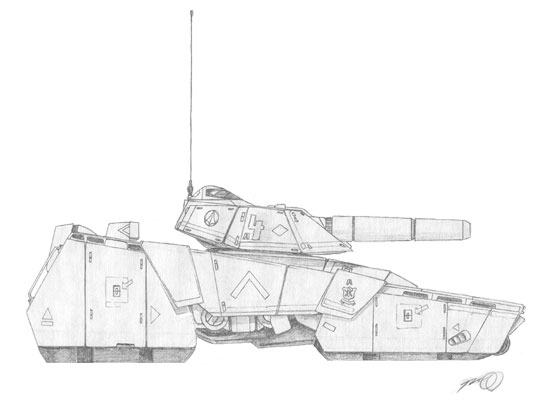
In its earliest attempt at designing a reconfigurable ground vehicle, the United Nations Defense Force developed the Centaur Hovertank in 2008. This vehicle provided hovering capabilities to overcome harsh terrain within two operating configurations. Tank mode used a conventional tank shape for basic operations and fast transportation. Centaur mode provided the tank with a means to raise the turret for increased range and visibility and the capability to operate better behind cover of hills, since the tank could literally lift its turret above a hillside to fire, then lower itself behind cover to reload and locate a new target. The increased tranversability of the thrusters provided significantly increased maneuverability in a combat situation while in centaur mode. This mode also made the secondary weapons "arms" available.
The original, internal combustion powered, VHT-1 mounted a set of Astra TZ-I weapons clusters. These clusters carried one 12.7mm machine gun each for light anti-armor and two M240 7.62mm machine guns each for anti-infantry, as well as a grenade launcher on one side and a flame thrower on the other. However, the 12.7mm machine guns proved to be insufficient for dealing with most Terran light armor of the time and the other systems were just plain overkill when it came to dispatching personel. Another weakness was the vulnerability associated with the pressurized napalm storage tanks. One stray 12.7mm AP round was sufficient to detonate these, which could disable the vehicle. As such, many crews tended not to fill the napalm tanks, thereby circumventing the problem. Some variants are known to exist that replaced the flame thrower with a two-shot in-line Scorpion launcher and replaced its storage tanks with expanded ammo capacity for the 12.7mm machine gun.
The next version, the A1, made use of gun clusters similar to those found on the successful Main Battle Robot destroid series. These clusters provided the tank with a significant advantage over conventional tanks by giving it two 25mm guns which were sufficient for light armored IFVs, and later the Zentraedi battle pods it would face. For anti-personnel it carried two lasers and two grenade launchers. The mix was well-liked by all, providing the unlimited ammo of energy weapons and the reliability of conventional grenades.
The mounting of the large 152mm rocket cannon was one of the more controversial decisions made by the design team at Vickers. It was a development of an old 6 inch (152mm) cannon, which fired the Shillelagh anti-tank missile, developed by the old United States of America in the middle 1960s. The gun/rocket system was mounted on the M551 Sheridan and the M60A2 main battle tank, but proved to be a utter failure. Due to the fragile nature of early guided missiles, the system suffered from poor reliability in the field, and never lived up to the high expectations held for it. The more robust nature of the Saracen anti-mecha missile solved some, but not all, of these reliability concerns. However, it was a compromise that had to be made. It was impossible to fire a normal high velocity gun, such as the German 120mm, from a hovervehicle while moving. The recoil was such that it would have propelled the Centaur backwards! The Saracen, however, can be fired on the move, though all other conventional rounds can only be fired from Centaur configuration when the mecha is firmly planted on the ground. This gun system was a thorn in the side of it's crews throughout it's service history.
When the Centaur was designed, protoculture power systems and how to use them were not fully understood. Because of the inability of the Robotech Research Groups to apply this new technology at that time, an internal combustion engine was chosen as a short-term solution to powering the Centaur. However, due to the perceived advantages of the size to power ratio and the clean operation of the protoculture energizers, it was decided that a modular powerplant compartment would be used to provide the capability of upgrading to protoculture cells once the alien technology was better understood. This proved a wise move, as only four years later protoculture came into it's own as a useable power source for military applications. Only the first 150 VHT-1 Centaurs were powered by Internal Combustion Engine (ICE) power packs. In 2008, Vickers upgraded the design to VHT-1A1 standard, which had the new protoculture packs and the excellent Astra TZ-II weapons clusters. All the old VHT-1s were sold or leased to national governments.
Due to problems stopping the tanks after the vulnerable forward thrusters were damaged, grappling hooks were added to provide a means to stop the tank without tearing up the underside in a controlled crash. Wheels were also added into the front of the forward thruster sections to minimize damage during groundings in rough terrain since it could help keep the vents off the ground. The primary limitation of the Centaur was the vulnerability of its hover engines to damage, so it relied on its maneuverability to survive more than on its armor against equivalently armed opponents. The Destroid series proved more successful against mecha on the battlefield due to their increased ability to sustain damage, though the Centaur proved valuable in its niche as a scout tank able to cover ground more quickly and easily than the lumbering Destroids. In addition, it was fairly effective against conventional armor fielded by the anti-UEG nations of Earth. Its lower price tag also helped make it popular with smaller loyalist nations as well. The system contained a large number of complex and delicate components that required constant maintenance to keep the tanks operating. However, due to the proliferation of the tank with non-aligned and smaller countries, spare parts were abundant.
An upgraded version of the Centaur, the VHT-1A2, was developed and entered into the bidding for the next-generation veritech hovertank for the UEG. The competition required the use of the EU-11, and hence the right side weapons cluster was replaced with an integral EU-11 laser cannon. An Oerlikon PP36 triple-barrel 36mm plasma pulse cannon replaced the TZ-II in the left arm. This weapon was used mostly for anti-aircraft work and as a secondary to the main armament. Due to the weak armor of the commander's cupola and the vulnerability of the Centaur to airborne attackers, the newer Centaur provided an uparmored cupola and increased the top armor overall to improve survivability against airborne attackers. The leg assembly was beefed up, due to the vulnerabilty of these components while in Centaur mode. The changes, while not altering the feet, hull or turret, did cause the center hull and turret to sit a little over a foot higher. Other details included a concealed radio antena, upgraded armor for the turret, and increased armor for the shirts on the feet. The 152mm rocket gun was retained.
The shoot-off originally went well for the fully-enclosed VHT-1A2 Centaur, due to its well-armored crew compartments, until the VHT's manufacturer announced the addition of an armored cover for the exposed pilot compartment. At this point, the VHT-2 Spartas counterpart provided better firepower in the form of a high velocity 105mm tank gun, possessed a full Battloid mode, and generally had greater operational flexibility in a smaller, lighter package. The VHT-2 also required only one crewmember to operate it, which was beneficial for a manpower-constrained post-holocaust UEG military. The money spent by Vickers was not a total loss, as the Centaurs then in service would eventually be upgraded to A2 standard.
With the progression of the VHT-2 Spartas hovertank line, the Centaur was relegated to more second-line duties, but wound up being used extensively by the Southern Cross Tactical Corps as a cheaper alternative to their battloids, and fought alongside their more conventional Anaconda tanks. Although Centaur production effectively ceased by 2016, many remained in service with the RDF Army when it was disbanded, and these were purchased by the ASC-TC. Most of the VHT-1A1s used by the Tactical Corps were upgraded to the -1A2 configuration to provide better protection in suppression of local uprisings and hostile non-aligned countries. Half of these upgraded VHT-1A1s retained the old Astra TZ-II weapons clusters. These versions were known as the VHT-1A1IP (for improved protection). Many VHT-1A1s and -1A2s were also part of the first waves of the REF Pioneer mission, though they were largely retired by 2036.
The Centaur gained its main reputation from use by the RDF Army when they were succesfully used to maintain order during the tumultuous Malcontent Uprisings. These successes were a major factor in the Tactical Corps' decision to procure them from the RDF Army when it was dissolved in the early 2020s. Later, the original VHT-1s proved to be very sought after by the resistance forces due to their non-reliance on protoculture with the internal combustion engine option, though their sheer age and high maintenance needs kept them extremely rare during the Invid occupation.
The Saracen is fired out the gun tube by a small charge, then the rocket motor fires and carries the missile the rest of the way to it's target.
| Type | : | Short range, anti-tank missile. |
| Service history | : |
2008-2020, RDF Army
2021-2033, ASC-TC |
| Length | : | 1200 mm. |
| Diameter | : | 152 mm. |
| Wingspan | : | 28 mm. |
| Weight | : | 32 kg. |
| Warhead | : | Tandem high explosive anti tank (HEAT). |
| Weight/yield | : | 5 kg. |
| Propulsion | : | Booster/sustainer rocket engine. |
| Guidance | : | Combined IIR and passive laser homing. |
| Speed | : | Mach 2.1. |
| Range | : | 6.3 km. |
| Platforms | : | VHT-1 Centaur |
This missile was adapted from the Rapier A short range ground launched missile of the RDF. It was conceived in 2008 as the main round for the VHT-1 Centaur Veritech hover tank. In comparison to the Rapier, the Saracen had lower speed and range, but increased warhead yield. It had an advanced HEAT warhead for dealing with the heavy armor of main battle tanks, much similar to the warhead of the old Hellfire. The missile had a diameter of 152 mm, so as to be fired from the main gun of the Centaur without the aid of discarding sabots. The range of 6.3 km compared well to conventional tank guns of the time. However, the shaped charge HEAT, warhead did not have quite the hitting power of a full on FSDS-TU Fin Stabilized Discarding Sabot - Tungsten, such as that fired from the VHT-2. Also, the guidance system, though better than the Shillelagh which inspired it, was not as reliable as a normal high velocity Sabot round.
This shell explodes 50 to 1000 meters from the tank, releasing a rain of 5000 anti-personel fletchets. It is used against unarmored troops in the open. Known for it's distinctive sound, which is like a swarm of bees.
This round will impact on a target, crush the thin plating of the round and smear the plastic explosive inside over the armor of the target. A base fuse will detonate the plastic, causing a scab of armor to shatter. This round has a terrifying effect on Zentraedi battle pods, thanks to their large frontal area and thin armor.
Smoke and illumination/white phosphorus. Also useful against unarmored troops in the open.
Fires a shaped charge. Older design, less effective than the others against modern armors.
Return to UNDF Veritech Index.
Go to Robotech Reference Guide Home Page.
Robotech (R) is the property of Harmony Gold. This document is in no way intended to infringe upon their rights.
Content by Pieter Thomassen, Robert Morgenstern, and Tim Wing, with Peter Walker